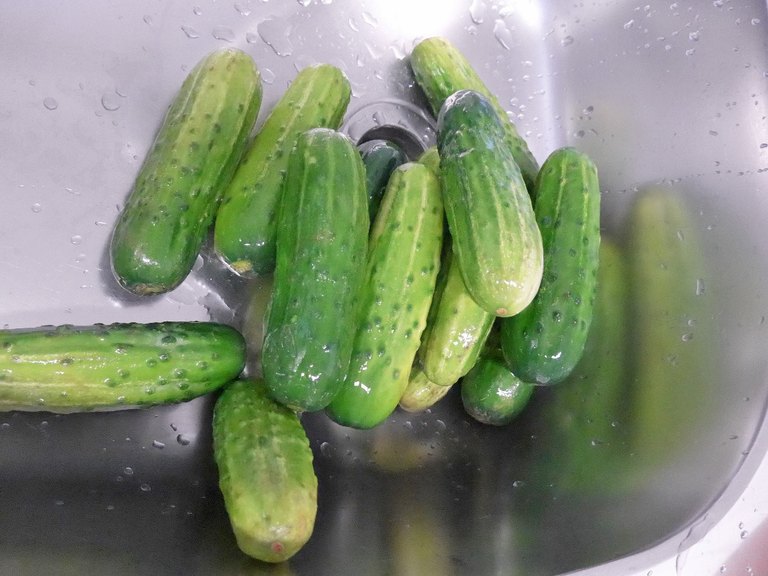Influence on fermentation
Due to a limited and inconsistent data situation and resulting uncertainties regarding the iodine supply of the population, methods for the quantitative detection of iodine in different food matrices were developed at the Max Rubner-Institut and the influence of manufacturing and processing methods on the iodine contents in foods was investigated. In a sub-project, the Institute for Safety and Quality in Fruit and Vegetables dealt with the production of iodine-enriched pickled cucumbers. For this purpose, pickled cucumbers were fermented spontaneously, i. e. only by the microorganisms already present on the cucumbers, both with and without iodized salt. Lactic acid bacteria play an essential role in this fermentation, among other things by producing lactic acid. Acidification of the food results in inhibition of growth of undesirable microorganisms and the desired flavor and texture of pickled cucumbers.
Fermentation of cucumbers (Cucumis sativus Potomac) was performed for 8 weeks at 20 °C with 5%, saline with and without iodine added on a laboratory scale (Figure 1), and the batches were sampled every 2 weeks. The objective of the work was to investigate the iodine content in the cucumbers during fermentation and after a final pasteurization step. In addition, the influence of the added iodine on the microorganisms involved in the fermentation was determined using 16SrRNA gene amplicon high-throughput sequencing. During the course of fermentation, an equilibrium of iodine content between cucumbers and brine was established. Subsequent pasteurization of the fermented pickled cucumbers resulted in no significant change in iodine content. During the first two weeks of fermentation, the pH decreased significantly regardless of iodine content, after which it decreased only minimally. Fermentation time significantly affected the composition of the bacterial community involved in the fermentation. In contrast, iodine content had no significant effect on the bacterial microbiota. The microbiota required for fermentation consisted mainly of lactic acid bacteria, was fully developed within the first two weeks and hardly changed over the further course.
It was thus shown that iodized salt can be used in the fermentation of pickled cucumbers, that the microbiota does not change significantly compared to non-iodized pickled cucumbers and that pickled cucumbers can therefore be enriched with iodine in this way.


